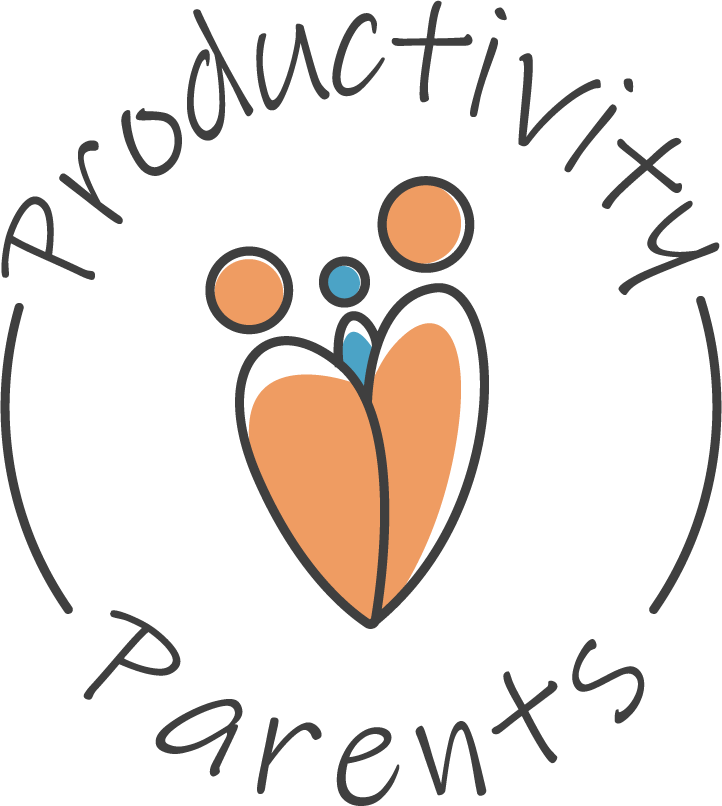Creating a family budget used to involve spreadsheets, calculators, and plenty of headaches. Today, financial technology has revolutionized how families can track spending, save money, and reach financial goals together. Modern budgeting tools leverage AI and automation to simplify the process, giving you more time to focus on what matters while still maintaining control of your finances.

I’ve found that the right tech tools can transform budgeting from a dreaded monthly chore into an empowering financial practice. Apps like YNAB with its zero-based approach or more comprehensive services like Simplifi offer features that help assign every dollar a purpose while providing insights into spending patterns. Whether you prefer creating custom spreadsheets or using dedicated apps, the key is finding tools that match your family’s unique financial style.
Key Takeaways
- Financial tech tools can automate budget tracking while helping you visualize spending patterns and savings progress in real-time.
- The most effective family budgeting starts with documenting all income sources and expenses before selecting the right tech solution for your specific needs.
- Regular monitoring and adjustment of your digital budget ensures your financial plan evolves with your family’s changing circumstances and goals.
Understanding the Importance of Family Budgeting

A family budget serves as the foundation for financial stability and future planning. Creating and maintaining a budget helps households track income and expenses while providing a framework for achieving important financial milestones.
Benefits of Family Budgeting
Family budgeting provides immediate and long-term advantages for households of all sizes. A well-structured family budget helps manage day-to-day expenses while serving as a tool for achieving long-term financial goals.
When I create a budget, I gain better visibility into my family’s spending patterns, which helps identify areas where we can cut back. This increased awareness often leads to reduced impulse purchases and more mindful consumption.
Budgeting also creates a financial safety net by establishing emergency funds for unexpected expenses like medical bills or home repairs. I’ve found that having 3-6 months of expenses saved provides tremendous peace of mind.
Perhaps most importantly, budgeting demonstrates financial responsibility to children, teaching them valuable money management skills they’ll carry into adulthood.
Common Budgeting Challenges
Despite good intentions, many families face obstacles when implementing a budget. Inconsistent income from commission-based work, freelancing, or seasonal employment can make planning difficult.
Unexpected expenses frequently derail budgets. Even with careful planning, surprise medical bills, car repairs, or home maintenance can quickly deplete savings.
I’ve learned that disagreements between partners about spending priorities create significant friction. When one person values saving while another prioritizes experiences, finding balance requires open communication.
Another challenge I encounter is budget fatigue – the tendency to abandon financial plans after initial enthusiasm wanes. Gathering financial documents like pay stubs and bank statements helps maintain organization, but consistency remains difficult.
Tracking every expense can feel tedious and time-consuming without the right tools or systems in place.
Setting Financial Goals as a Family
Effective family budgeting begins with setting realistic goals. I start by calculating our household’s net income and tracking our spending patterns to understand our financial baseline.
Short-term goals might include paying off credit card debt or saving for a vacation, while medium-term goals could focus on building an emergency fund or making home improvements.
Long-term planning involves:
- Retirement savings
- College funds for children
- Mortgage payoff timelines
- Major life transitions
I find that involving all family members in age-appropriate financial discussions creates buy-in and shared purpose. Children can participate by learning about saving for special purchases or contributing to family vacation funds.
Regular budget reviews (monthly or quarterly) help my family stay aligned with our goals and make adjustments as circumstances change. These reviews serve as a roadmap to financial stability, making our financial future more secure.
Evaluating Your Household’s Financial Situation

Before implementing any budgeting system, I need to understand my current financial landscape. This requires careful examination of income sources, spending habits, and overall debt and savings positions.
Tracking Income and Expenses
The foundation of any budget begins with knowing exactly what money comes in and goes out. I should gather all income sources, including salaries, side hustles, investments, and any irregular payments. For expenses, I can use Excel spreadsheets to organize my spending into categories.
Digital tools make this process significantly easier than manual tracking. Many banking apps automatically categorize transactions, giving me a head start.
For at least one month, I need to track every dollar spent – from fixed costs like mortgage/rent to variable expenses like groceries and entertainment. This creates my financial baseline.
I shouldn’t guess or estimate figures. Accuracy is crucial for an effective budget foundation.
Identifying Spending Patterns
Once I’ve collected 1-3 months of data, I can analyze my spending patterns. This reveals where my money actually goes versus where I think it’s going.
I should look for:
- Necessary vs. discretionary spending
- Recurring subscriptions I might have forgotten
- Spending triggers (times of day, emotional states, social situations)
- Seasonal variations in spending
Technology tools can help identify these patterns through visualizations and reports. Many budgeting apps show spending breakdowns by category, merchant, and time period.
I might discover I’m spending more on dining out than realized, or that impulse purchases add up significantly over time. These insights guide where I can make meaningful adjustments.
Assessing Current Savings and Debts
The final piece of my financial evaluation involves understanding my broader financial position. I need to document:
Savings inventory:
- Emergency fund balance
- Retirement accounts
- College savings
- Other investment accounts
Debt inventory:
- Credit card balances and interest rates
- Mortgage/rent obligations
- Auto loans
- Student loans
- Personal loans
I should note minimum payment requirements and interest rates for each debt. Creating a comprehensive budget plan requires balancing debt reduction with savings goals.
My debt-to-income ratio helps assess financial health, calculated by dividing monthly debt payments by monthly income.
Choosing the Right Financial Tech Tools

Selecting appropriate financial technology can transform how your family manages money, making budgeting more accessible and consistent. The right tools match your family’s specific needs and technical comfort level.
Types of Budgeting Apps for Families
Family budgeting apps generally fall into several categories based on their primary functions. Comprehensive budget managers like YNAB (You Need A Budget) help you allocate money before spending it, following the zero-based budgeting method.
Expense trackers automatically categorize your spending to show where your money goes. These apps connect to your accounts and provide visual breakdowns of your habits.
Goal-focused apps help families save for specific objectives like vacations or college funds. They often include progress trackers and celebration features when milestones are reached.
Debt management tools, such as EveryDollar, specialize in creating payment plans and visualizing debt reduction progress.
All-in-one financial platforms provide a holistic view, combining budgeting with investment tracking, retirement planning, and sometimes tax preparation features.
Key Features to Consider
When evaluating budgeting tools, I first consider account synchronization – how easily the app connects with various banks and credit cards. Reliable syncing prevents manual entry fatigue.
Customization options matter significantly. Every family’s budget categories differ, so the ability to create personalized categories and subcategories improves relevance.
Security features should be non-negotiable. Look for two-factor authentication, encryption, and clear privacy policies that protect your financial data.
Multi-user access allows couples and family members to collaborate on the same budget. The best tools offer customizable permission levels for different users.
Visual reporting helps translate numbers into meaningful insights. Charts and graphs that clearly show spending patterns make budgeting more intuitive.
Cost structure varies widely among apps. Free options often have limited features, while subscription-based services typically offer more comprehensive tools. I evaluate whether premium features justify their cost for my family’s needs.
Comparing Popular Financial Tech Solutions
Simplifi stands out for balancing comprehensive features with user-friendly design. It excels in spending insights and offers flexible budgeting approaches that adapt to different family situations.
YNAB focuses on proactive budgeting, teaching families to allocate every dollar before spending. Its educational resources make it particularly valuable for those new to structured budgeting.
Monarch provides a holistic view of finances, integrating investments and retirement accounts alongside day-to-day budgeting.
PocketGuard simplifies budgeting with its “In My Pocket” feature, showing exactly what’s available for discretionary spending after accounting for bills and goals.
Quicken Classic remains popular for families wanting desktop-first solutions with extensive customization and reporting capabilities.
I recommend trying free versions of several apps before committing. Most families find their ideal solution after experimenting with 2-3 different tools.
Setting Up Your Family Budget With Tech Tools

Modern technology has revolutionized how families can track and manage their finances. The right digital tools make budgeting more accurate, accessible, and easier to maintain across all household members.
Syncing Accounts for Real-Time Tracking
The first step in creating a tech-powered family budget is connecting your financial accounts. Most budgeting apps allow you to sync checking, savings, credit cards, and investment accounts in one dashboard.
I recommend choosing platforms that offer automatic transaction categorization to save time. Apps like YNAB use AI to help create zero-based budgets where every dollar has a specific purpose.
For families sharing financial responsibilities, look for apps with multi-user access. This ensures everyone can view the budget, but you can also set permission levels if you don’t want all users to have equal access.
Security is crucial when syncing accounts. Only use applications with bank-level encryption and two-factor authentication to protect your financial data.
Creating Household Budget Categories
Effective family budgeting requires thoughtful category creation that reflects your specific household needs.
Start with essential categories: housing, utilities, groceries, transportation, insurance, and debt payments. Then add family-specific categories like childcare, education expenses, pet care, or hobby funds.
I suggest using the income and expense tracking features available in tools like Excel templates, which automatically calculate differences and show you where money is going.
Key Categories to Include:
- Fixed expenses: Mortgage/rent, car payments, insurance
- Variable necessities: Groceries, utilities, fuel
- Family priorities: Education, childcare, family activities
- Individual allowances: Personal spending for each family member
- Savings goals: Emergency fund, vacations, college funds, retirement
Assigning Spending Limits and Alerts
Once categories are established, set reasonable spending limits based on your income and financial goals.
Most budgeting apps allow you to create alerts when you’re approaching category limits. I’ve found these notifications invaluable for preventing overspending before it happens.
For variable expenses like groceries or entertainment, consider using a weekly rather than monthly limit.
Monitoring Progress and Adjusting Your Budget

Creating a budget is just the first step – regularly tracking your financial progress helps ensure you stay on target and adapt to changing circumstances. Technology makes this monitoring process significantly easier and more insightful.
Analyzing Monthly Reports
Most budgeting apps generate detailed reports showing your spending patterns across categories. I recommend reviewing these reports at the end of each month to identify trends and potential issues. Look for categories where you consistently overspend and those where you might have room to save more.
Many financial apps like Excel spreadsheets offer visualization tools that transform raw numbers into easy-to-understand charts and graphs. These visual representations help spot patterns that might not be obvious in numerical format.
Pay special attention to unexpected expenses that disrupted your budget. Were these truly one-time costs, or do they represent a category you haven’t properly accounted for? Technology helps you drill down into these details effortlessly.
Revising Budget Allocations
When your reports consistently show overspending in certain categories, it’s time to adjust your allocations. I find it’s best to make small, incremental changes rather than dramatic overhauls.
Technology tools make it simple to run “what-if” scenarios—testing how shifting funds between categories might impact your overall financial goals. This helps avoid the trial-and-error approach of traditional budgeting.
Consider creating dynamic budget categories that automatically adjust based on seasonal needs. For instance, utility budgets might increase during winter months and decrease during spring.
Most digital budgeting platforms allow you to easily move funds between categories with just a few clicks. This flexibility prevents the frustration of rigid budget structures that don’t reflect real-life spending patterns.
Involving Family Members in Check-Ins
Schedule regular family budget meetings—I suggest monthly—where everyone reviews the financial reports together. Modern budgeting apps make these discussions more productive by providing clear visuals everyone can understand.
Create customized dashboard views for different family members based on their responsibilities and interests. This personalization helps maintain engagement, especially with teens who might be learning financial management.
Consider setting up automated alerts that notify family members when spending approaches category limits. This real-time feedback helps everyone stay accountable without requiring constant manual monitoring.
For younger children, many family budgeting tools include educational features that gamify saving and spending decisions. These features make financial literacy fun while reinforcing the family’s overall budget goals.
Enhancing Financial Literacy Through Technology
Technology offers powerful tools for building financial knowledge and skills in today’s digital world. Modern apps and platforms make learning about money management more accessible and engaging for family members of all ages.
Educational Apps for Kids and Teens
Teaching children about finances early can set them up for future success. Apps like PiggyBot and Bankaroo create virtual banks where kids can track allowances and set savings goals. These platforms gamify financial education, making it fun rather than tedious.
For teens, investment platforms offer simulated trading environments where they can practice investing without real money at stake. This hands-on experience builds confidence and practical knowledge.
Many of these apps include age-appropriate challenges and rewards to reinforce positive financial behaviors. I’ve found that consistent use of these tools helps young people develop healthy money habits naturally.
Resources for Improving Money Management Skills
For adults, technology serves as a powerful tool for enhancing financial literacy through accessible and interactive resources. Budgeting apps like YNAB use AI to help create zero-based budgets, ensuring every dollar has a purpose.
Online courses from platforms like Khan Academy and Coursera offer comprehensive financial education at your own pace. These courses cover everything from basic budgeting to advanced investment strategies.
Podcasts and YouTube channels dedicated to personal finance provide bite-sized learning opportunities during commutes or downtime. I recommend following 2-3 trusted creators who align with your financial goals.
Financial institutions increasingly offer digital tools for customers, including spending analyzers and goal-setting features that make financial management more intuitive and less intimidating.
Staying Secure and Protecting Your Financial Data
When using financial technology for budgeting, protecting your personal information must be your top priority. Security measures prevent unauthorized access while ensuring your financial data remains private and protected from potential threats.
Privacy Settings and Permissions
I recommend reviewing privacy settings in any financial app immediately after installation. Most budget apps require connection to your bank accounts, which means sharing sensitive credentials. Always enable two-factor authentication when available to add an extra security layer.
Be selective about which accounts you connect. I suggest linking only accounts you actively monitor for budgeting purposes, not every financial account you own.
When granting permissions:
- Limit location tracking to “while using the app” only
- Disable unnecessary notifications
- Review data sharing policies before accepting terms
- Check for options to limit data collection for marketing
Remember to regularly audit connected accounts and remove access for apps you no longer use. Personal finance tools typically have robust security, but your vigilance matters too.
Tips for Safe Use of Financial Technology
I always ensure my devices have the latest security updates before installing budget apps. Using outdated software creates security vulnerabilities that hackers can exploit.
Create unique, complex passwords for each financial app. A password manager can help generate and store these securely. Never use the same password across multiple financial services.
Be wary of public Wi-Fi networks when accessing financial information. I use a VPN when checking budgets outside my home network to encrypt data transmission.
Watch for phishing attempts that mimic legitimate financial apps:
- Check sender email addresses carefully
- Verify requests through official channels
- Never click suspicious links in emails or texts
- Download apps only from official app stores
Regularly monitor account activities for unauthorized transactions. Many budgeting tools include alerts for unusual spending, which serve as early warning signs of potential security breaches.
Frequently Asked Questions
Families often have specific questions when setting up and managing their budgets with technology. These common questions address best practices, tool selection, expense prioritization, budget preparation steps, example frameworks, and the benefits of digital solutions.
What are the best practices for creating a family budget?
Start by gathering all your financial information including pay stubs, bank statements, and bills. This creates a comprehensive picture of your household finances.
Be realistic about your income and expenses. I recommend tracking your actual spending for a month before finalizing your budget categories to ensure accuracy.
Include every family member in the budgeting process when appropriate. This creates buy-in and helps everyone understand financial priorities and limitations.
Review and adjust your budget regularly. I find that monthly check-ins help identify issues early before they become major problems.
What tools can help families manage their budget more effectively?
Apps like YNAB (You Need A Budget) use AI to help create zero-based budgets where every dollar has a specific purpose. This approach prevents overspending and encourages intentional money management.
Spreadsheet programs offer customizable templates that can grow with your family’s changing needs. I’ve found these particularly helpful for visualizing financial progress over time.
Banking apps with spending analysis features automatically categorize transactions, saving you time on manual entry. Many also offer bill payment reminders to help avoid late fees.
Family-specific budgeting apps like Goodbudget or Honeydue allow multiple users to track shared expenses, perfect for couples or families with teens learning financial responsibility.
How should a family prioritize expenses when setting up a budget?
Always prioritize essential needs first: housing, utilities, food, transportation, and healthcare. These non-negotiable expenses form the foundation of your budget.
Next, allocate funds for debt repayment and savings goals. I recommend treating savings as a non-negotiable expense rather than something you do with “leftover” money.
Consider your family’s unique values and long-term goals when prioritizing discretionary spending. This might mean allocating more for education, experiences, or specific hobbies.
Create separate categories for irregular expenses like car maintenance, holiday gifts, or annual insurance premiums. Setting aside small amounts monthly prevents these predictable but infrequent costs from becoming emergencies.
What are the steps involved in preparing a monthly family budget?
First, calculate your total net income from all sources after taxes and deductions. This establishes the absolute limit of what you can spend.
Next, track your spending patterns to understand where your money currently goes. Most budgeting apps can import several months of transactions to identify trends.
Set realistic financial goals based on your family’s priorities. I suggest including both short-term objectives (vacation, new appliance) and long-term goals (college fund, retirement).
Create specific budget categories and allocate funds to each based on your spending analysis and goals. The most effective budgets balance flexibility with accountability.
Can you provide an example of a family budget for better understanding?
For a family with $6,000 monthly income, housing might consume $1,800 (30%), while utilities average $400 (7%). Transportation including car payments, insurance, fuel, and maintenance might require $800 (13%).
Food expenses often fall between $800-1,000 (15%), divided between groceries and occasional dining out. Healthcare costs including insurance premiums and out-of-pocket expenses might average $500 (8%).
Savings should ideally claim 10-15% ($600-900), split between emergency funds, retirement accounts, and specific goals like education. Debt repayment beyond mortgage might require $400 (7%).
The remaining $500-700 (8-12%) covers discretionary spending like entertainment, clothing, subscriptions, and miscellaneous expenses, tailored to your family’s unique needs and priorities.
What are the advantages of using budgeting software for families?
Budgeting software provides real-time financial insights, allowing families to make informed decisions before overspending occurs. I’ve found this particularly valuable for avoiding impulse purchases.
Many tools use AI to analyze spending patterns and suggest budget adjustments based on your family’s unique habits. This personalized approach is more effective than generic budgeting advice.
Digital tools simplify expense sharing and financial communication between family members. This transparency reduces conflicts about money and helps teach children financial responsibility.
Automated tracking saves significant time compared to manual methods, making you more likely to maintain your budget long-term. The best budgeting apps also offer features like bill reminders and goal tracking to keep you motivated.
